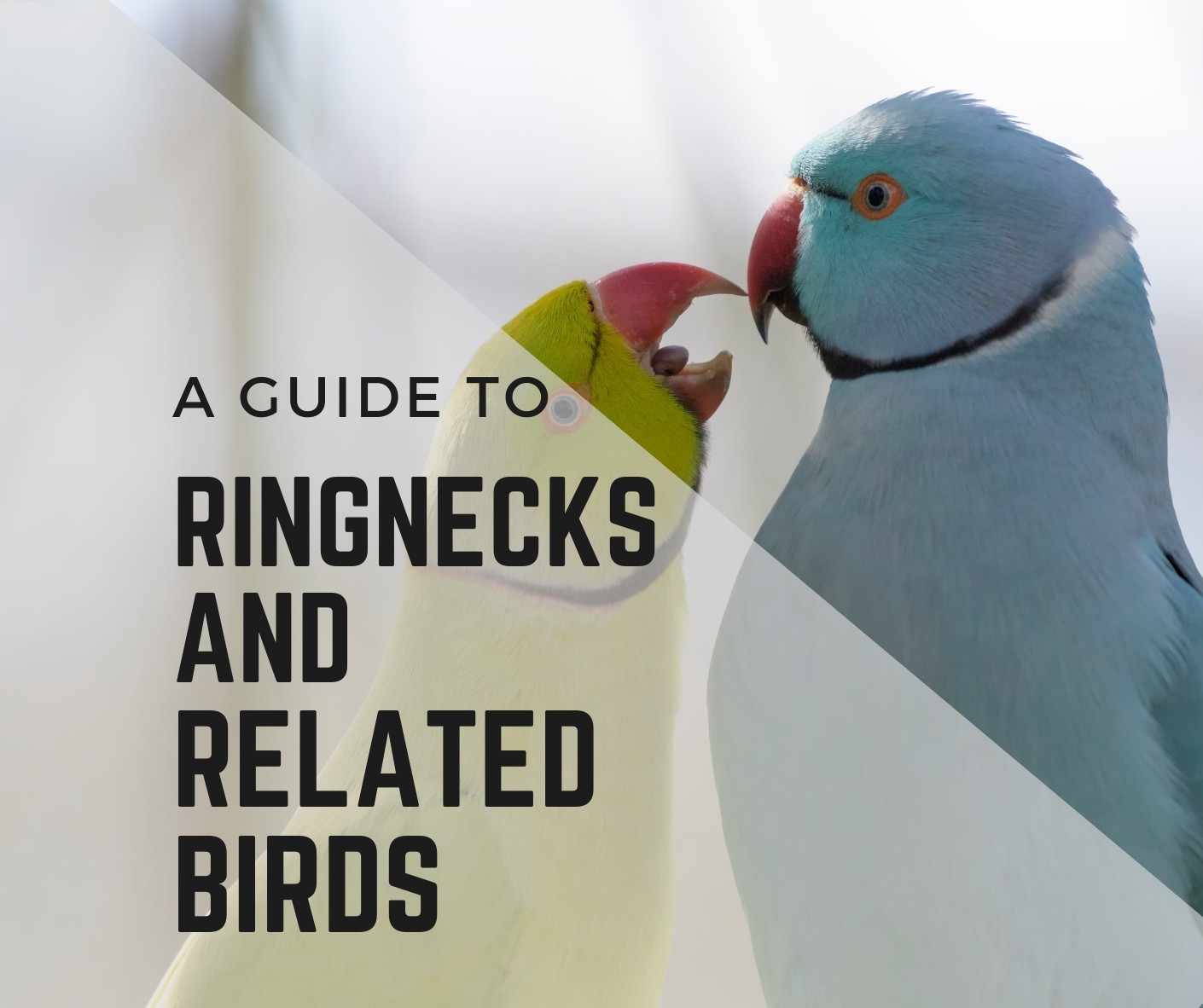
Introducing Ringnecks and Related Birds
Ringnecks (Psittacula) are Asian and African Parakeets.
The breed types include
- Ringnecks,
- Mustache,
- Derbyans,
- Alexandrine,
- Plumheads,
- Slatyheads.
Their size varies, however they can grow larger than a Mini Macaw.
Ringnecks
The Ringneck’s basic, natural color is green, but breeders have created blues, whites, and other colors.
Indian Ringnecks are the most commonly kept but with the new successes inbreeding, others are quickly gaining popularity.
Ringnecks breed well in captivity, but it’s extremely important to keep in mind these baby birds are best raised in individual brooders, spoon-fed so that they may bond better with humans.
Derbyans and Alexandrines
Derbyans and Alexandrines are the largest of the breed, growing to 23″ in length.
Plumheads and Slatyheads
Plumheads and Slatyheads are the smallest, reaching only 8 to 10″ long at maturity.
They are not known for their ability to talk, while the others are great talking birds even though they are generally quiet in demeanor.
Human contact and individual attention are essential to the development of the bird.
Ringnecks are good parents, with both the mother and father caring for the babies.
The normal clutch size is 3-4, with an occasional clutch size of 5.
They prefer to use deep nest boxes, like a 24″ deep Cockatiel box, but will also use a normal Cockatiel box.
When purchasing your bird, suggests you buy a baby from a reputable source.
Ringnecks and vets
Follow up with your veterinarian for bacterial culture and general check up to ensure you’ve adopted a healthy bird.
Owning a Ringneck does not involve a lot of vet care, but they can be susceptible to viruses, especially polyoma.
Be sure to provide lots of small toys and a cage that is appropriate for the size of the bird.
Ringnecks Diet
Their diet includes fruits, veggies, seeds, and they seem to enjoy wet mixes, such as those sold in stores.
Stable temperament and good health are traits of this group.
In recent years, the hybridization of this group has become more prevalent.
In Summary
If you have any questions as to what type of bird you are buying, be sure to do your research before you make your purchase.
Similar to human children, Ringnecks go through a “terrible twos” phase at 6-8 months, but with work, discipline, and loving care they make enjoyable pets.

Hi, There and Welcome to BirdsNews.com, is here to help you learn and care about pet birds. and this blog is a journal of everything I’ve learned.
